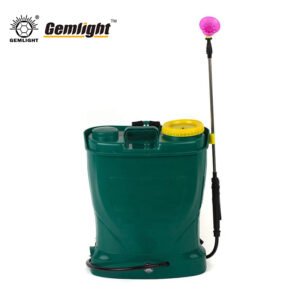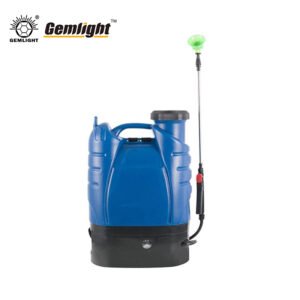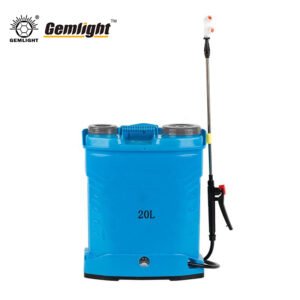Farmers hoe: the modern vitality of traditional farming tools
Throughout the long history of agricultural development, the farmers hoe, as one of the oldest farming tools, has always played an irreplaceable role.
From the stone prototype in the Neolithic Age to the improved iron farming tools of today, the agricultural hoe, with its unique design and multifunctionality, still maintains its vitality in the competition with modern tools such as plows and tractors.
In this paper, we will analyze the unique value of agricultural hoe compared with other tools from the dimensions of historical evolution, functional characteristics and applicable scenes.
First, the historical precipitation: from stone tools to the millennium inheritance of iron
The origin of the agricultural hoe can be traced back to the Neolithic Age, early humans will be polished stone tied to a wooden stick, used for digging and turning the soil.
After entering the Bronze Age, hoes made of bronze began to appear, but their high cost limited their popularity. It wasn’t until the Iron Age that the iron hoe quickly became the iconic tool of farming civilization due to its ruggedness and low cost.
This design continues to this day, with modern agricultural hoes typically consisting of an iron blade and a long wooden handle, combining sharpness and flexibility to adapt to a wide range of soil conditions.
Unlike plows and tractors, which rely on animal or mechanical power, the farm hoe has always been human-powered at its core.
This “human-land unity” not only reflects the reverence for nature in traditional farming culture, but also hones farmers’ delicate sense of the land in practice.
Even in today’s highly developed mechanization, the agricultural hoe is still an indispensable tool for farming in mountainous areas, terraced fields and other complex terrain.
Functionality: the perfect balance of precision and flexibility
The design concept of the agricultural hoe focuses on “precision farming”. Their flat blades, usually between 20 and 30 centimeters wide, can effectively cut off weed roots while avoiding excessive disturbance of the soil around the crop.
For example, in corn, soybeans and other crops between the rows of weed control operations, agricultural hoe through the lateral swing way, can accurately remove weeds without damaging seedlings, which is difficult to achieve the refinement of large-scale machinery operations.
In contrast, the main function of the plow is to deeply turn the land, suitable for large areas of cultivation, but can not complete the weeding, soil cultivation and other subsequent processes; tractor, although very efficient, but its huge body in the narrow plot or greenhouse environment is difficult to perform.
Another major advantage of agricultural hoe is “multi-functional integration”: the same hoe can be used to turn the soil, broken soil, but also to complete the ditching, ridging and other operations, especially suitable for small-scale farmers, “a machine multi-purpose” needs.
In urban home gardening, the short-handled hoe has become the preferred tool for balcony gardening enthusiasts because of its lightweight and flexible features, further expanding the application scenarios of agricultural hoes.
Scenario adaptation: the wisdom of survival in complex environments
In mountainous and hilly areas with complex terrain, the value of agricultural hoes is particularly prominent. These areas are often rugged roads, scattered plots of land, large-scale machinery is difficult to enter, and agricultural hoe with its lightweight and easy to carry the characteristics of farmers become a “personal partner”.
For example, in terraced farming in the mountainous regions of Yunnan, farmers use agricultural hoes to turn the soil in precise layers, which not only maintains soil and water, but also improves land utilization.
In the tropical rainforests of Southeast Asia, farm hoes are also used to clear undergrowth and create space for cash crops such as coffee and cocoa.
The “zero-energy” nature of the agricultural hoe makes it more practical in remote areas where electricity and fuel are in short supply than modern tools that rely on external energy sources.
In addition, the farm hoe is ideal for ecological cultivation, as it minimizes disturbance to the soil structure, in a world where organic and sustainable farming is the norm.
Studies have shown that excessive use of mechanical tillage leads to soil compaction and destruction of microbial communities, while manual hoeing operations are better able to maintain soil fertility.
Fourth, the advantages and disadvantages of the comparison: efficiency and cost of the game
From the efficiency point of view, agricultural hoe obviously can not be compared with tractors, combine harvesters and other modern machinery.
Taking plowing operation as an example, a medium-sized tractor can plow 5-10 mu of land per hour, while the efficiency of manual use of agricultural hoe is only 0.1-0.2 mu/hour. However, this difference in efficiency is not significant in small-scale operations.
For family farms or urban gardens, the low-input, easy-to-maintain nature of the farm hoe is much more attractive – a good quality hoe costs only a few hundred dollars, while a small tractor can cost tens of thousands of dollars to purchase.
In terms of maintenance costs, a farm hoe requires little additional investment and only regular sharpening of the blade to maintain performance, whereas mechanical tools require regular replacement of parts and consume fuel, which is more costly in the long term.
In addition, the operation threshold of agricultural hoes is extremely low, and no professional training is required to get started, which is especially important for elderly farmers or part-time farmers.
V. Future Prospects: Modern Transformation of Traditional Tools
With the progress of science and technology, agricultural hoes are constantly being revolutionized. The application of new materials such as carbon fiber reduces the weight of the hoe by more than 30% while maintaining high strength; the design of adjustable handle length allows users of different heights to find a comfortable operating angle.
In the field of intelligent agriculture, the combination of hoe and sensors, GPS technology is being tested, the future may realize the precise application of fertilizer, pest monitoring and other functions.
However, no matter how the technology iterates, the core value of the agricultural hoe – the fine management of the land and the harmonious coexistence of man and nature – will never change.
In the pursuit of sustainable agricultural development, the wisdom of this ancient tool is being re-recognized: it is not only a tool for improving productivity, but also a link between tradition and modernity, and between humans and nature.
Conclusion
The existence of the Farm Hoe_Durable Farm Tool Hoe for Efficient Farming confirms a simple truth: in the field of agriculture, there is no absolute “advanced” and “backward”, but only the choice of whether it is suitable or not.
When plows and tractors roar on the plains, the agricultural hoe is still working silently in the mountains, vegetable gardens and people’s memories. It tells us with three thousand years of history: true agricultural wisdom lies not in the size of the tool, but in the respect and reverence for the land.
Whether it is traditional farming or modern gardening, the agricultural hoe is always the most reliable partner in the hands of farmers, which may be the ultimate answer that it has survived for thousands of years.





